Livestock Herd Scheme Values for 2019
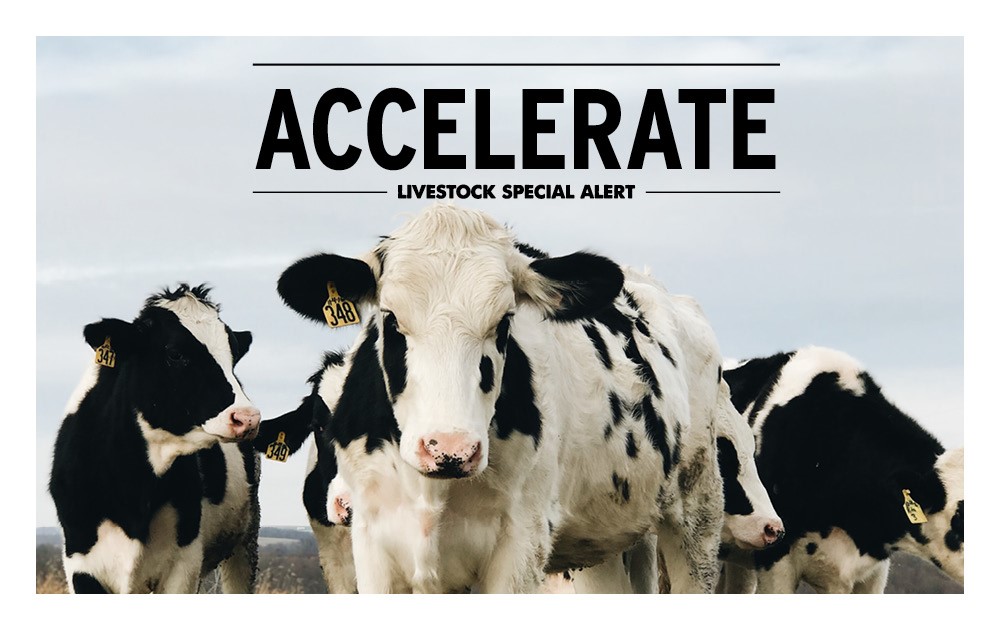
The IRD have recently announced this year’s livestock herd scheme values and we think this is a great opportunity to update you on the latest movements.
The herd scheme values are the national average market values as determined by a process involving a review of the livestock market as at 30 April.
Dairy Cattle
All classes of Dairy cattle have dropped in value compared to the previous year, whilst this was seen as a surprise in some parts of the country, the herd scheme value is reflective of values across the entire country. The small downward movement may also have been influenced by a rebalancing of the livestock numbers by region, as these numbers are only provided every 4 years from Statistics New Zealand.
A Mixed Age Dairy cow now has a National Average Market Value of $1,513 compared to $1,529 last year – a drop of 1.05%. Rising two-year heifers have dropped by almost 3% percentage to $1,274. Rising one-year heifers have fallen slightly by 0.87% to $685.
As noted last year, the Mycoplasma Bovis cattle disease has certainly had an impact on values as less livestock are being traded, and livestock numbers have fallen because of farmers moving to predominantly closed farm systems to protect themselves from infection. In past years Dairy Herd Scheme values have correlated with the farmgate milk price very closely, this is no longer the case. The effects of Mycoplasma Bovis are now being seen across the entire country, not just the South Island where the infection was first discovered.
With talk of an increased farmgate milk price in the 2020 season we would expect that values will hold and possibly increase slightly as the impact of Mycoplasma Bovis diminishes. Regional variations will provide opportunities for stock to enter the Herd Scheme, and we should always keep this in mind as additional livestock are purchased during the year.
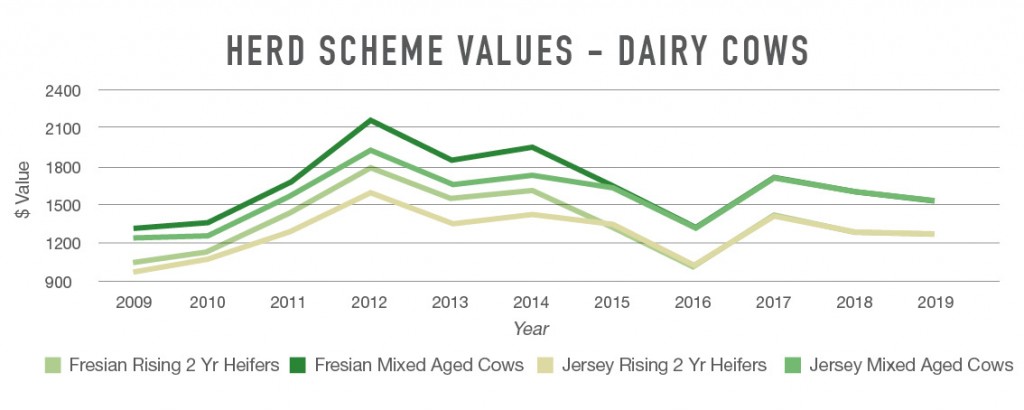
BEEF
 Beef values have continued to fall back as they did last year, with falls in all classes except for breeding bulls which saw a sharp rise of 13.42% to $3,407. This is the highest value that breeding bulls have attained and is reflective of high demand for top quality breeding stock particularly for traditional beef breeds such as Angus and Hereford.
Beef values have continued to fall back as they did last year, with falls in all classes except for breeding bulls which saw a sharp rise of 13.42% to $3,407. This is the highest value that breeding bulls have attained and is reflective of high demand for top quality breeding stock particularly for traditional beef breeds such as Angus and Hereford.
Aside from the increase in value of breeding bulls the average 5.9% decline in values was largely expected as beef values continue to come off the high of two years ago as commodity prices have stabilised towards a more sustainable long-term value. Increased sheep values have also seen a moderate swing away from beef as sheep farmers increase numbers at the expense of retaining beef cattle. Mycoplasma Bovis has also had an impact on the beef industry as movement controls impact on beef cattle sales.
In the coming year sheep and beef farms, in particular, are coming under threat from forestry due to the Government incentives currently available for planting trees and the receipt of carbon credits under the Emissions Trading Scheme. US Beef production is expected to slow in in the 2019 year which should support higher values in the coming season. Whether this has an impact on beef values in the coming year remains to be seen.

SHEEP
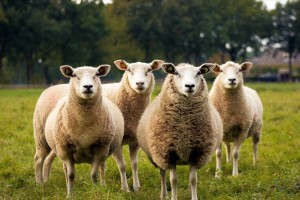 2019 has seen another rise in sheep values with an average increase of 14.2%. A two-tooth ewe is now valued at $214 compared to $150 in 2017, this equates to a 42.7% increase over the past two years which highlights the strength of the industry over the past two years.
2019 has seen another rise in sheep values with an average increase of 14.2%. A two-tooth ewe is now valued at $214 compared to $150 in 2017, this equates to a 42.7% increase over the past two years which highlights the strength of the industry over the past two years.
There are parts of the country which are under pressure in terms of drought, with winter feed being used to bridge the feed gap in late summer and autumn. Strong prices, even for store lambs have lessened the impact of this at the farm gate with many farmers still able to have finished some of their lambs before relying on the store market.
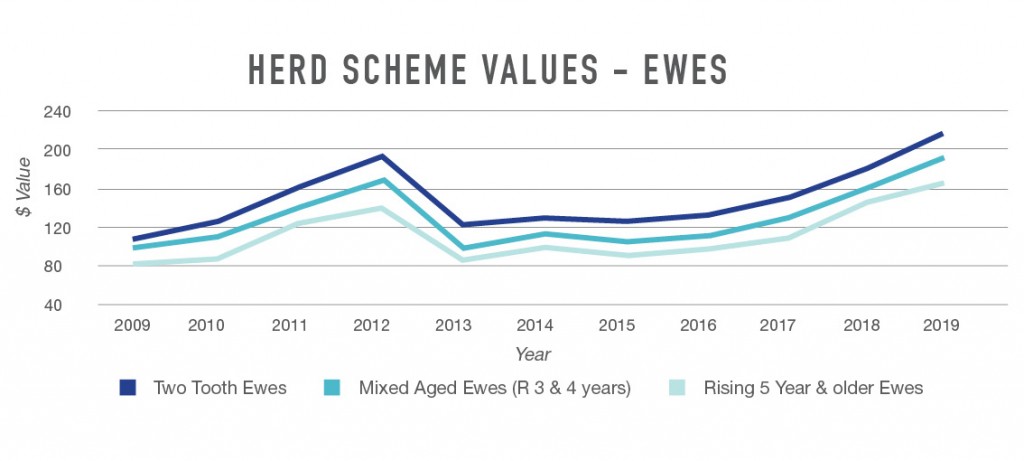
DEER
 Deer values for the predominant breeds of Red Deer, Wapiti and Elk have continued to increase, with an average increase of 7.4% across all classes.
Deer values for the predominant breeds of Red Deer, Wapiti and Elk have continued to increase, with an average increase of 7.4% across all classes.
Values for “other deer breeds” have fallen sharply and represent the mid-point between meat and trophy values for the year.
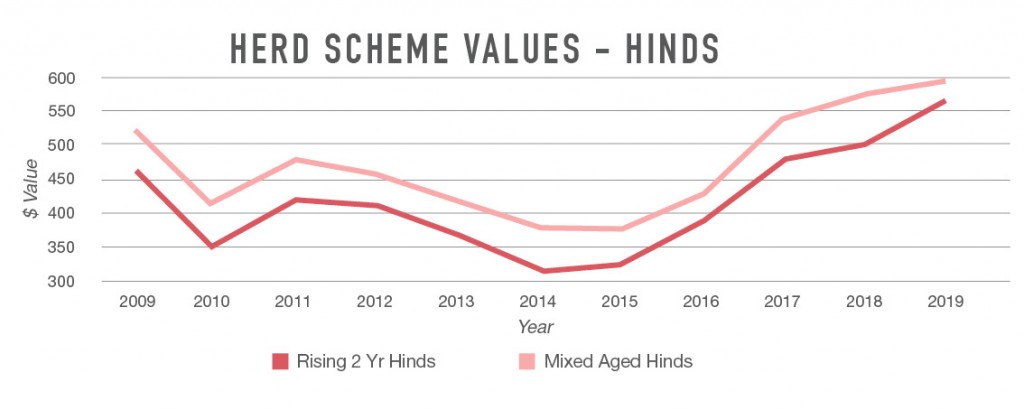
GENERAL
Careful consideration needs to be given to your livestock election choices. Even though changes were made to the Herd scheme in recent years, there is still flexibility around how to value increases in numbers – if you increase your numbers during the year you are able to choose an alternative valuation option to value that increase.
Whether you take that option or you elect to value the increase using herd values will depend on a number of factors – such as:
– where we are in the cycle of livestock values (e.g. at the bottom, or at the top)
– if the increase is a permanent or a temporary one
– your longer term intentions
As the decision is clearly one that should be made on a case by case basis, we will naturally discuss your valuation options with you on review of your 2019 Financial Statements and Taxation Returns.
